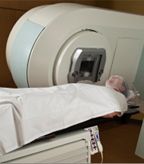Palliative Radiotherapy in Elderly Patients With Bone Metastases Improves Quality of Life
Palliative radiotherapy is an effective means of alleviating pain and improving overall quality of life in elderly patients with bone metastases, according to a new study.
Palliative radiotherapy is an effective means of alleviating pain and improving overall quality of life in elderly patients with bone metastases, according to results presented at the Second European Society for Radiotherapy and Oncology Forum.

For many, radiotherapy is thought of as a treatment option in combination with chemotherapy and surgery. This form of therapy requires hyperfractionation, short pulses of high-dose radiation, in an effort to eliminate the lesion being treated. However, aside from attempting to cure the disease, radiotherapy can be used in a palliative manner, in which fewer treatments are given in order to help reduce the disease and patient burden associated with therapy.
The Dutch Bone Metastasis Study was a trial conducted on patients with bone metastases, testing the efficacy of radiation delivered in one of two strategies: a single dose of 8 Gy or six separate doses of 4 Gy each, for a total of 24 Gy. This study involved 1,157 patients who participated in questionnaires after each radiotherapy session. Patients were asked to rate their level of pain and quality of life, including psychological distress, physical distress, and impairment of activity.
The results of the analyses showed that, despite showing baseline dysfunction in quality of life and physical ability, elderly patients were not inclined to evaluate their quality of life as poor. In addition, a discrepancy between the elderly and young patients was found in terms of visceral metastasis and type of primary tumor. Elderly patients more often presented with prostate cancer, compared with the predominance of breast cancer in the younger patients. The young also tended to be afflicted with visceral metastases more often than the elderly (35% of patients between the ages of 35 and 62 vs 17% for patients over 75). All patient groups demonstrated significant meaningful response to palliative radiotherapy; no differences in the dosing schedules were reported.
The authors concluded that palliative radiotherapy should be a recommended treatment course for elderly patients. At this time, radiotherapy is not often prescribed for this patient group, mainly due to concerns with efficacy or deleterious effects on quality of life due to the burden of hospital visits. This study demonstrated that elderly patient quality of life was not significantly different from younger patients, despite the treatment and lower response rate to the radiotherapy. In addition, a significant portion (67%) of the elderly patients did produce a meaningful response in terms of pain. “We believe our analyses show a very useful outcome with a practical conclusion: You should offer simple, swift, palliative radiotherapy for elderly patients,” said lead author Paulien Westhoff, MD.
Future work from this research is aimed at focusing on the elderly patients, an ever-growing population in oncology. Dr. Westhoff and her group in the department of radiotherapy at the University Medical Centre Utrecht in the Netherlands believe that other symptoms of metastatic disease and primary tumors can be addressed using palliative radiotherapy in the future.